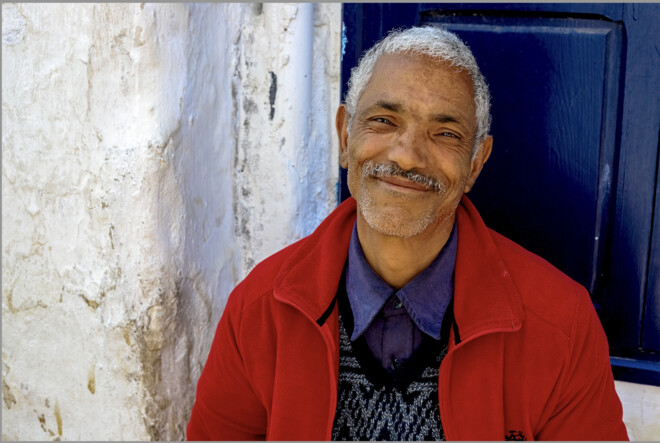
Moroccan People
Morocco is known for being one of the most tolerant of the Arab nations. Moroccan people are primarily Arabic and Berber. Moroccans are known for their hospitality and warm, friendly nature. Visitors are welcomed. The people speak Moroccan Arabic or a version of the Berber language (Tamazight). As a former French colony, French is also widely spoken. English is spoken in cities and tourist areas.
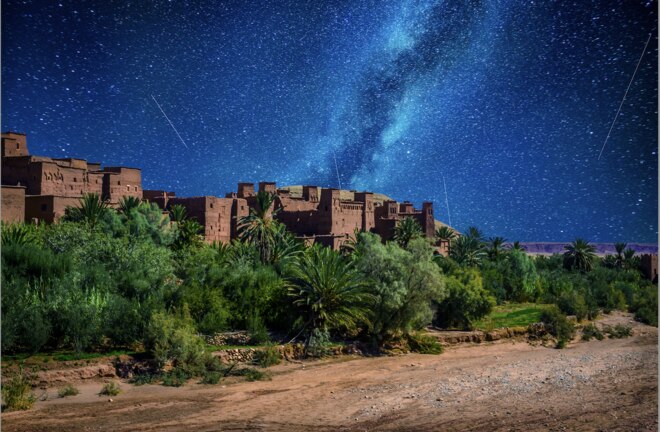
Ancient History
Morocco is an ancient kingdom. For 40,000 years, Morocco has been a bridge between Europe, Africa and the East. It came under the influence of the Phoenicians, Carthaginians and Rome, but its origins are Berber, Arab and African. Since the arrival of Islam in the 7th century, the country has been an independent power and, at times, an empire throughout its history of invaders, battles and the reign of kings/sultans. France occupied Morocco in the early 20th century and control was eventually ceded to a line of Moroccan kings. King Mohammed VI was enthroned in 1999 bringing sweeping political and economic change.
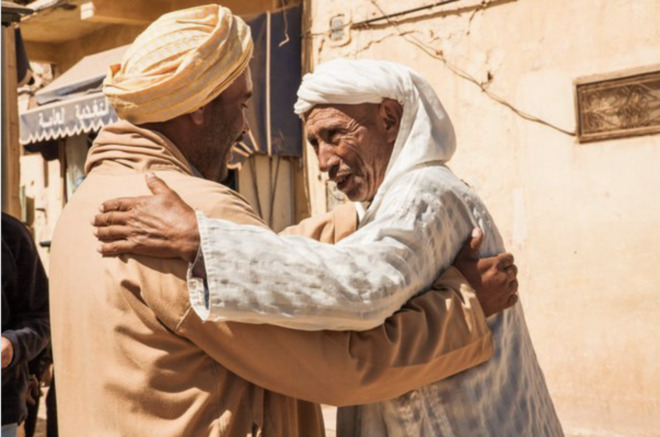
Moroccan Customs & Etiquette
Moroccan culture is a blend of religious and ethnic traditions encompassing Berber, Arab, African, Mediterranean and Jewish influences. Greetings involve a handshake and friendly inquiries after health, happiness and family – no business is discussed until after these pleasantries. After shaking hands, Moroccans often touch the right hand to the heart as a sign of respect. Friends of the same sex might tack on an air-kiss or two on the cheek. Moroccan chattiness makes everyday interactions more pleasant – and longer. Patience and extroversion are assets. In the souks, vendors call out to customers, joking and striking up conversations. It all makes for a lively local experience.
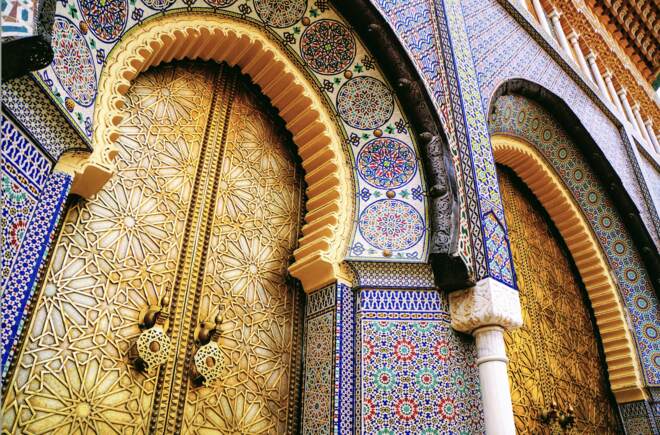
Impressive Architecture
Due to its unique location, Morocco has been influenced by many cultures throughout history. African tribes from the other side of the Sahara Desert, Islamic traditions from Arab neighbors and European colonizers have influenced its architecture. The strongest architectural influence is Islam. The specific elements of Islam coupled with the Hispano-Moorish influence has created its unique architectural style.
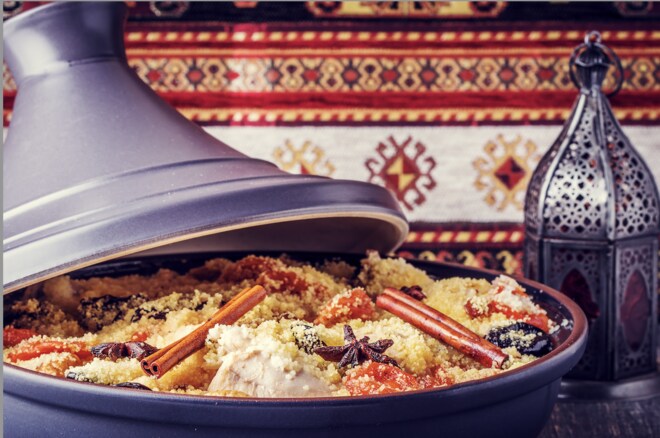
Moroccan Cuisine
Moroccan food is some of the best in the world. Due to the history of Morocco being on the ancient spice route, the combination of spices from traders around the world has cozied its way into local kitchens for centuries (cumin, saffron, turmeric, ginger, cardamom, paprika, cinnamon). Dishes are layered with sweet and spicy – they are earthy with bright flavors that reflect the vast array of spices, meats, vegetables and dried fruits available in local markets. The iconic dishes of couscous, tagine, harira soup, bastilla and chicken with preserved lemon are just the beginning.
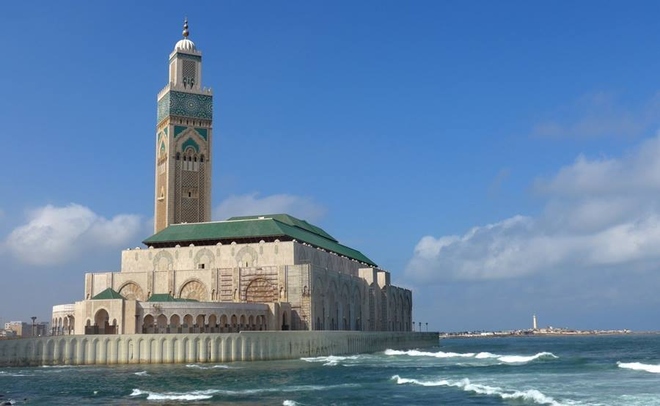
Insight into Islam
Morocco’s official religion is the orthodox, or Sunni, a sect of Islam. It’s based on the Koran and the Sunna, in which the words and deeds of the Prophet Mohammad are recorded. Islam was introduced to Morocco in the 7th century and it is the foundation of the country’s laws and faith. It’s the unifying force in the daily life of every Moroccan whose duty it is to respect the Five Pillars of Islam. The King of Morocco is both the country’s secular and spiritual leader.
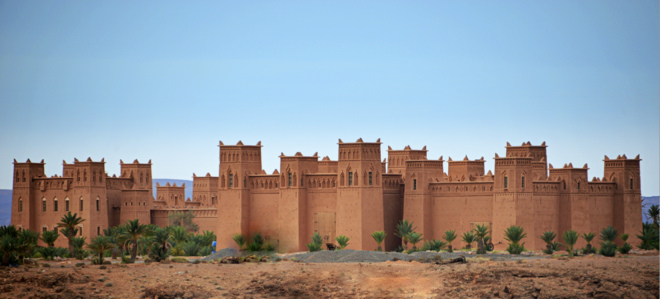
Medinas (ancient walled cities)
Almost all of Morocco’s medinas have a similar layout. They consist of a densely packed urban conglomeration enclosed within defensive walls and lookout towers. The tangle of narrow, winding streets and countless alleyways turns most medinas into a labyrinth. The center of the medina is cut through by wide avenues running between the main gates and other main streets. Despite their chaos, the medinas are organized by certain pre-set conditions. The mosque is always centered at the heart of the medina.
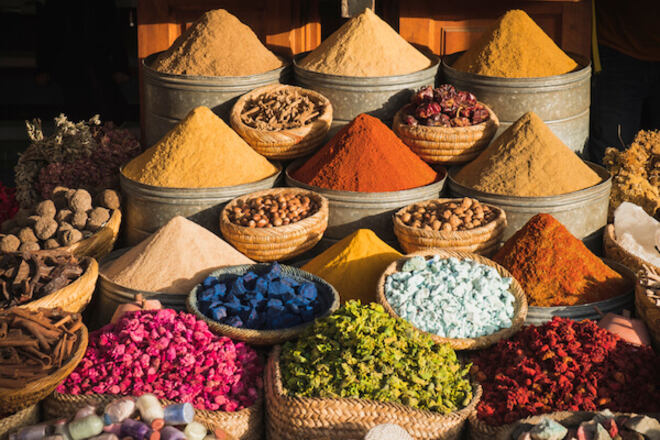
Souks (traditional markets)
Every city and village in Morocco has its souk(s). In villages, the souk can last for a few hours a day. In cities, they are open continuously. Souks are busy, colorful places where agricultural produce and craft items often brought by country people are sold alongside a range of other essential and non-essential items. Souks are a major part of Moroccan life. They are found in the medinas and are laid out according to the type of goods being sold. Bargaining is expected and part of the local experience when visiting Morocco. It’s always entertaining!
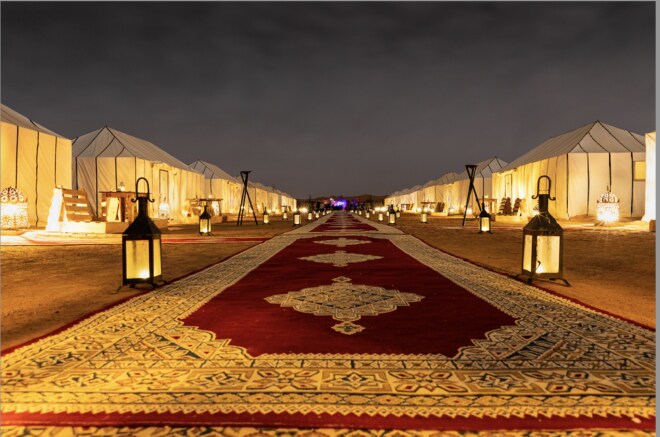
Sensory Experiences
Morocco presents visitors with sensory experiences at every turn. The fusion of the Arabic culture, North African cuisine and French influences make Morocco a feast for the senses. From the landscapes to the scent of steaming tajines to the exotic – Morocco offers all of it.
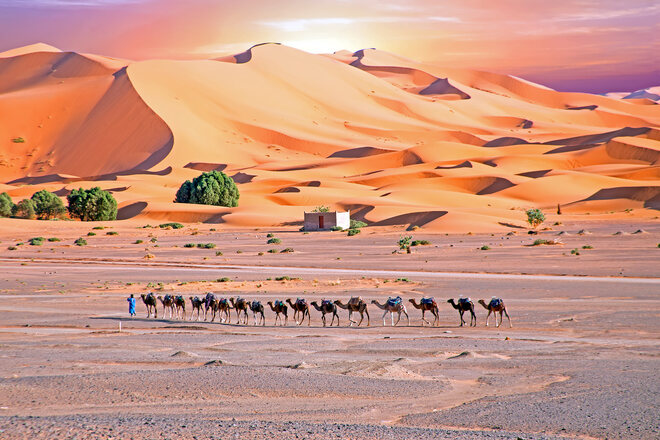
The Sahara Desert
The Sahara Desert…there is no better way to experience a night in the Sahara Desert than to camp under the stars. Camps range from simple Berber-style desert camps to all-out luxury glamping set-ups. The local Berbers will show visitors how to wrap their scarves for optimal sand and sun protection. Hop on your camel (or ATV) and have a ride. The changing colors of the sunrise and sunset over the sand dunes is a memory for life.
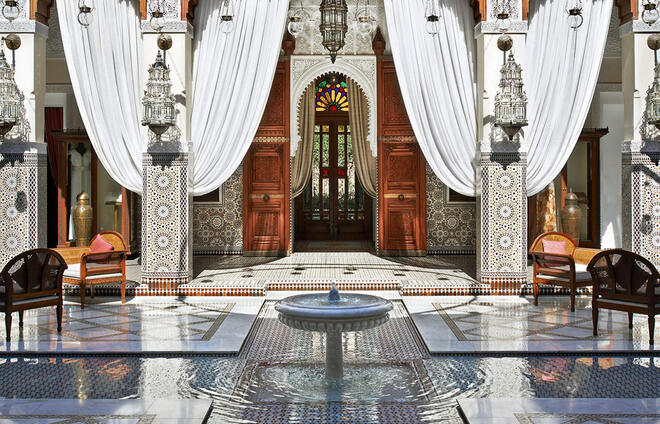
Mosaic Tile Work
Moroccan tile work, called Zellige, is an art form using geometric shapes. It’s often made from individually chiseled tiles. This form of Islamic art is one of the main characteristics of Moroccan architecture. Shapes are usually those found in geometry: diamonds, squares, triangles, stars and crosses. This traditional tile work is used to ornament walls, ceilings, fountains, floors and pools.
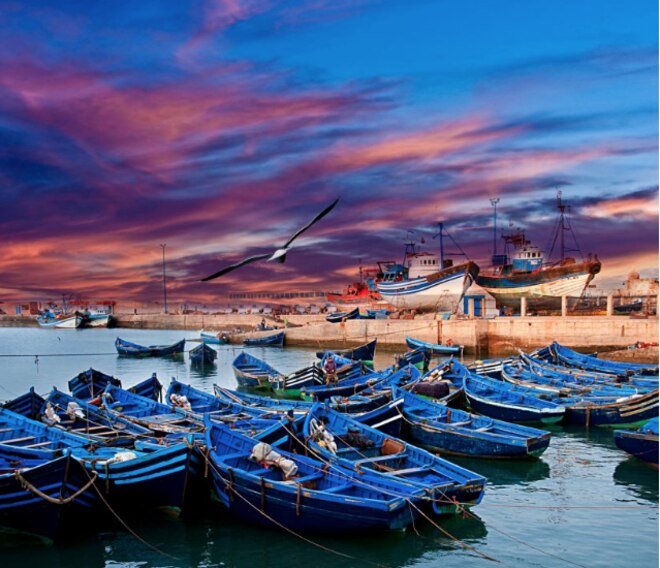
The Atlantic Ocean & Old Ports
The beautifully situated Atlantic ports such as Essaouira take on a life of their own. As you come over the final stretch of road into Essaouira, the Atlantic Ocean with its white-washed city opens before your eyes. Essaouira is an old Portuguese port dating back to the 16th century. It has its own tumultuous history complete with dramatic ramparts and cannons backing up to the lively seafood market. The long sandy beach is ideal for walking while watching surfers and windsurfers. A mecca for the hippies in the 70’s, it is still an artists’ town today.
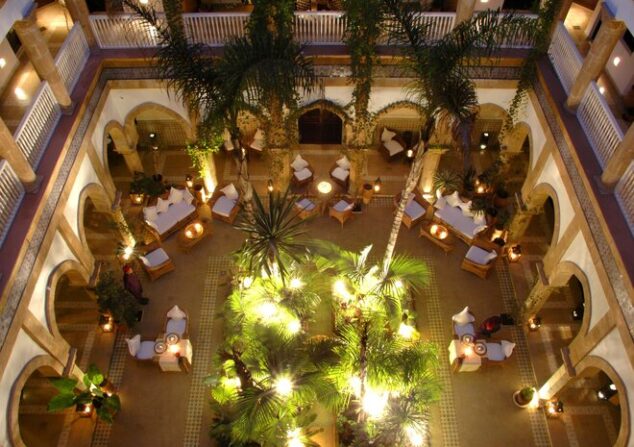
Riads (guest houses/small hotels)
Simply put, a riad is a traditional Moroccan house. Riads come in all sizes from guest houses to smaller hotels. The floors and balconies of a riad center around an inner courtyard and garden. True riads have lush plants and a central fountain. Each riad is unique often with individually decorated rooms showing off Moroccan architecture and intricate tile work bringing out the room’s beauty and personality.
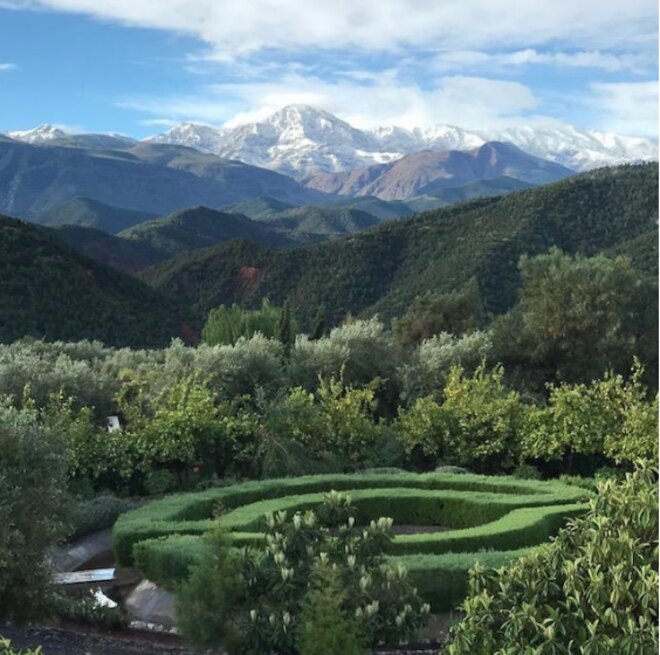
The High Atlas Mountains
The High Atlas is the highest mountain range in North Africa. Extending from the western plains of the Atlantic seaboard to the eastern border with Algeria, the High Atlas form a 500-mile weather barrier across Morocco separating the Mediterranean from the Sahara Desert. The High Atlas peaks range from 10,000-13,000′ with steep valleys and deep narrow canyons. Mount Toubkal is the highest peak at 13,671′ The High Atlas is the source for many rich river systems that provide favorable conditions for settlements. The High Atlas Mountains are inhabited by Berbers who live from agriculture, sheepherding and handicrafts.
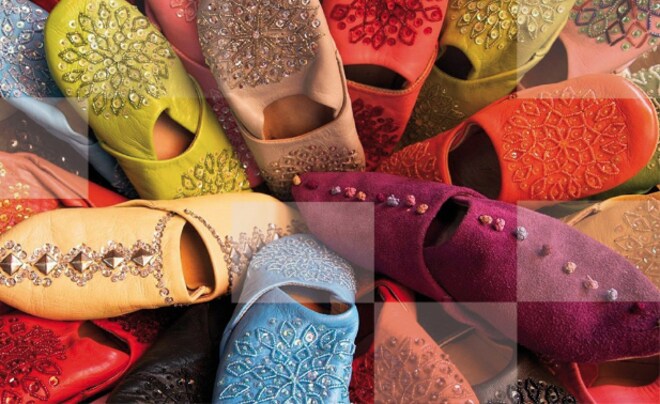
Moroccan Shopping & Handicrafts
Moroccan crafts are a fundamental part of Moroccan life. Moroccan cooperatives have been working in wood, leather, wool, stone, linen, clay, silver and copper for centuries. Although Morocco is more modernized today, the arts and crafts are still produced in traditional ways. Shopping in the souks is a lively and authentic experience. In Morocco, bargaining is not so much a custom as it is a duty.
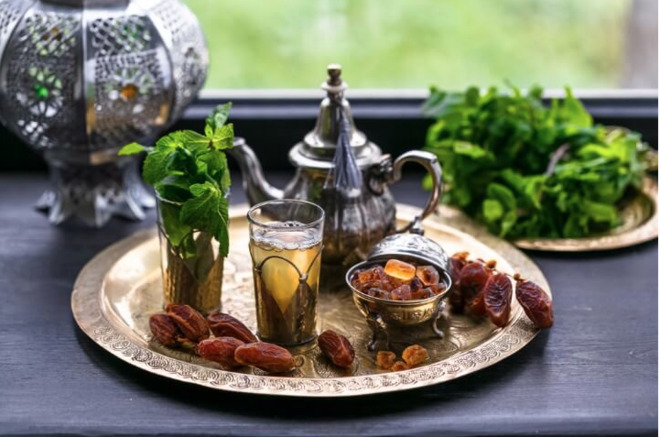
Mint Tea
Moroccan mint tea is made by steeping green tea with fresh spearmint leaves. Moroccans drink it several times a day. Moroccans are famous for their hospitality. It is the custom to offer tea to any visitor that might stop by – at home and also in the souks. It’s easier to buy a Berber rug after chatting with a friendly carpet vendor offering a cup of mint tea – you might buy one or even two!
Interested in this tour? Click here to learn more!